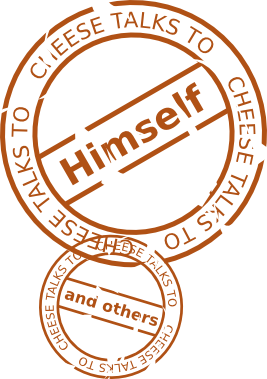
Last year, I had the pleasure of participating in the inaugural AdventureJam event, a two week challenge to create "adventure games" that brought over one hundred developers together and resulted in 71 submissions (plus a bunch more games that didn't manage to meet the submission deadline or weren't submitted properly).
Two weeks ago, AdventureJam 2016 was announced, and now seems like a good time to reflect on last year's event, its outcomes and its legacy.
In this article, we'll take a look at AdventureJam's place and meaning within the context of the driverse and sometimes amorphous adventure game genre, and hear from the event's organisers and judges. We'll also dig into some commonalities between submissions and consider the technologies used, before highlighting the titles playable on all three major desktop operating systems and giving mention to those which have received further development beyond AdventureJam.
- Adventure Games And AdventureJam
- Organisers Interview
- Judges Interview
- Game Submissions
- Cross-platform Games
- Continued Development
- Closing Thoughts
Adventure Games And AdventureJam
With its roots in the 70s, the broader adventure game genre has been present thoughout computer gaming's history, embracing and exploring new technologies right up to the present. From text and hypertext adventures through to point and click adventures, story centric puzzle games and visual novels through to interactive movies and action adventures, the forms which adventure games have evolved into and legacy they have bestowed upon the industry are rich and powerful.
For AdventureJam, organisers Cassie Benter and Stacy Davidson settled on "a game that embodies the spirit of adventure" as a brief for the jam, avoiding restricting participants' creative freedom and celebrating the diversity which can be found within the adventure game genre and the genres it has influenced.
To me, this freedom to express, celebrate and enjoy adventure games free from any specific genre definitions or boundaries (whether they be useful or pedantic) resonated well with the notion of adventure and helped ensure that the submitted games would mirror and perhaps exceed the variety of possibility space explored by the genre. Much in the way that some of the games to come out of 7DFPS have tended to push at the boundaries of traditionally accepted FPS games, AdventureJam has spawned many projects that feel new and interesting while still maintaining ties to one of computer games' longest lineages.
Less able to lean on asset re-use or repetitive gameplay, a typical adventure game represents a significant amount of work to perform within a fortnight. Some participants cleverly reduced this through brevity, minimalism or generated content, while others took the challenge head on and pushed to create works of impressive scale.
These kinds of pressures echo the hurdles that the genre has had to face, as increasing production overheads combined with declining prominence alongside the rise of 3D gaming ate heavily into the perceived viability of adventure games, and in some ways it seems a poetic homage to struggle against constraints to create a story worthy of being told.
In the final days before we shipped [Grim Fandango], Chris Purvis, Kevin Bruner and I were dog-tired, but dared not leave the office in case the game fell out of QA again. And we watched the pretty demo mode on Grand Prix Legends because we were too tired to play it. But we did pick up Half-Life, and I remember playing the first ten minutes and thinking, "Oh that's it then, adventure games are done." Because HL did such a good job of bringing story-telling and atmosphere into the first ten minutes... We'd never seen that in an FPS. - Bret Mogilefsky, DF Game Club's 3rd Grim Fandango Session
Today, adventure games are far from gone. The passion of players and developers for stories, adventures and exploration have kept the genre alive both in the form of more traditional adventure games in all their flavours, but also in the many other genres which have come to embrace the kind of storytelling priorities that adventure games have always championed.
↑return to top↑Organisers Interview
AdventureJam's origins lie in a game concept that never eventuated. After having trouble finding an existing adventure game oriented game jam that was a good fit for a game they wanted to make, writer/adventure game enthusiast Cassie Benter and developer/visual effects artist Stacy Davidson eventually decided to organise their own.
To get a deeper look at where AdventureJam has come from and where it is going, I invited Cassie and Stacy to share some thoughts on what it takes to bring together adventure game enthusiasts and give them encouragement and motivation to create.
What motivated you to create AdventureJam, and have those motivations changed over time?
Stacy: Initially, Cassie had a concept for a game and we wanted to try and make it during a jam, but we couldn’t really find one that fit what we wanted to do. Either they were too short, or too specific in their criteria. There was even a jam specific to adventure games, but there were all these rules about palette and graphical style, so it seemed to be aimed at people doing retro point & click adventure games inspired by a very specific era. We didn’t want to make a retro game, we wanted to do something outside the box, and I think we finally decided that if we were itching to do our own take on what an adventure game could be, there might be others out there wanting to do the same thing, so why not start a jam of our own? And really, if you’re going to do a jam and encourage people to create new games, I think we felt people should be free to take the concept in whatever direction their imagination led them, after all that’s why jams are so great. The sheer amount of fresh ideas that come out of something like this, it’s amazing, and we certainly didn’t want to stifle it with a lot of confining rules.
Cassie: Yeah, the entire thing for us was just that - we didn’t want to create rules to force a specific kind of game. Adventure games have evolved so much, and are still evolving today. We didn’t want people to feel confined and end up scrapping an original idea that - who knows - could end up redefining the genre again. This is why our rules were so simple: you have two weeks to make an adventure game, and we don’t define what "adventure game" means.
I suppose you could say that our motivations changed over time, because as it was getting closer to the start date, things came up and I couldn't participate. But people were so hyped up over AdventureJam, and I was seeing all the awesome feedback and game ideas floating around. When that happened, I wasn't too bummed out that I couldn't participate anymore - I just wanted to cheer these guys on and watch their development!
What's involved with organising a game jam?
Stacy: Actually, GameJolt made it all so easy. We didn’t have to do any of the hard stuff - the web development, the voting, all of that is handled by their site. I recalled following Asylum Jam closely and was really impressed by how it worked, so it was a no brainer to return to GameJolt for AdventureJam.
One thing I did want to do was provide our participants with access to all the resources they might need, so we set up a forum for team building and development discussion, and I set out to create this massive "Resources" page to list over a dozen game engines including Unity, Adventure Game Studio, even text adventure engines, as well as free image editors, sprite editors and sound and music resources, and that list has continued to evolve ever since. We also needed to gather together of few other awesome people to help make this jam a reality. Octavi Navarro (a.k.a. "Pixels Huh") was an amazing pixel artist I had been following on Twitter, and he very generously agreed to create our logo banner. And we were extremely lucky to find a group of super talented designers to select games for special judges’ awards, in addition to those voted on by the community.
Cassie: For our judges list, we wanted 3 adventure game developers who recently created games that we felt were very different from each other. Steven Alexander from Infamous Quests created an old-school homage to Sierra Online - an adventure game/RPG hybrid, by the name of Quest for Infamy. Jordi de Paco from Gods Will Be Watching, which really made you think ahead in order to survive, while also having a small element of chance for something to go wrong. Jake Elliott from Cardboard Computer created Kentucky Route Zero, a southern Gothic adventure game with a very heavy focus on its incredible narrative.
Aside from the judges, we also wanted to contact multiple journalists, in hopes that they would write about AdventureJam and help us spread the word. One of the websites that wrote about us was one of my favorites: Rock, Paper, Shotgun. It was very cool to see something of ours appear on websites like these!
What benefits do you feel game jams offer for developers, for players and for the industry?
Stacy: I think jams can be great for developers because it gives everyone a focused period of time in which everyone is striving to create, and finish, something. That is such a big deal to any aspiring developer. And I think AdventureJam is great for the genre, too. There’s this annoyingly persistent myth that adventure games are "dead", and everyone and their mother claims that their game will somehow resurrect them. The truth is, adventure games never really died. They dipped in popularity, for sure, but it’s a genre that has been alive and evolving ever since, albeit slowly. After all, there are so few new games coming out in this genre in comparison to the mid 90’s, I think when you get a lot of people together on a mission to stretch the boundaries and bring new ideas to the table, only good things can come of that. In the course of a couple of weeks, we saw over 80 new, unique entries into the genre spring up for this jam. I was really ecstatic with the outcome!
What surprises did you encounter along the way in AdventureJam 2015?
Stacy: We had text adventures! That was amazing. I still think there are so many unexplored possibilities in text adventures. Just look at Firewatch - here you have this beautiful 3D environment and some of the most riveting moments were made up of text against a solid background. We also had a team attempt to create their adventure game in GameMaker: Studio, so there was a lot of coding basically from scratch, without any adventure framework, and they live streamed most of their development on Twitch.
Cassie: On the other hand, we encountered some issues where the community was stacking votes and positively voted in the music category for a game that didn't feature any music at all. The developers for the game were very kind in letting us know about it and asked for the game to be recalculated for fairness of other entries, and GameJolt was more than helpful in assisting us in removing them from that category. It was a pretty painless fix, but it was still one of those infamous bumps in the road. We’re going to try something different this year in hopes of remedying this problem, which we’ll talk more about soon. And as Stacy already mentioned, there were awesome surprises too! Such as the moment we discovered John Romero (id Software - Wolfenstein 3D, Doom, Quake) followed AdventureJam’s Twitter! Stacy and I were both a little star struck by that one!
What outcomes have you seen so far, and what outcomes do you expect to come from AdventureJam 2016?
Cassie: We had some really incredible games submitted during AdventureJam 2015. It was absolutely mind blowing what some people were able to accomplish in a small time span of two weeks! And sometimes the ideas from game jams can turn into something much larger. For example, Matt Frith created Foundations which won the Developer's Choice award, and was called a "vertical slice" by Jordi de Paco. Frith later announced plans for a prequel for his AdventureJam entry by posting a pixel-art background on Twitter. Similarly, Ghostly Guru Studios created The Endless Night - Prelude, which is currently pay-what-you-want while the developers continue to make the full game.
I couldn’t even place a finger on what I expect to happen with AdventureJam 2016, but I really hope that it can be the kickstart that someone needs to get into games development. As someone who has never delved into games development before, I’ve sat around just wondering if I’d be good at it or not. AdventureJam is a chance for me - and people like me - to learn, improve, and discover if this is something we want to do for the rest of our lives. I just hope that the folks at home are brave enough to step out of their comfort zone with me.
Will we be seeing more of AdventureJam in the future?
Stacy: Absolutely! We are working hard to build up AdventureJam 2016 as we speak! There will be a few minor changes this year. We’ve replaced the forum with a Discord channel, which we hope will promote a more vibrant, constant, living discourse, rather than the usual sterile forum threads. We’re also discussing a few other slight alterations, but nothing too drastic. We feel like the jam was a blast last year and we’re really just looking forward to seeing who pushes the envelope again this year, and seeing what awesome new stories and experiences people have in store for us.
Cassie: We will continue to make the experience of AdventureJam as smooth as possible each year. We had very few bumps in the road in 2015, and we’re working hard to make sure that 2016 is even better!
Do you have any advice for aspiring adventure game developers?
Stacy: There really has never been a better time to be doing this. As someone who started tinkering with basic on the TI-99/4A and Commodore 64, take my word for it, this is the golden era of game development. We’re in a fairly unique spot in this industry now where you can grab a cheap, or even free, engine to create games with minimal programming, create graphics and sound with free tools, upload your creations to huge markets, get your work seen by the world and even make a living doing it.
At the same time, the whole industry is just now beginning to wake up from a lot of misguided ideas that games can be interactive movies, or somehow meld with Hollywood. Games are coming into their own, not only as a marketable medium, but as a form of expression. They’re being embraced as their own thing, you know? It’s not a book to be soaked up, or a movie to just sit and experience, it’s medium where the audience can actually connect with the creator, and interact, and I think the real possibilities are only beginning to come to light now with the recent indie explosion.
So gather your ideas, gather your tools. Learn an engine - any engine will do, the important thing is to know how to use it. Get your ideas working, get them playable, iterate, throw out the old ideas and keep your creations fresh, keep evolving. Jumpstart your imagination with jams like ours, and Ludum Dare, Global Game Jam, One Game A Month, Asylum Jam, or start your own! Have fun with it! And buy war bonds! (Just kidding, don’t do that last thing.)
↑return to top↑Judges Interview
After submissions closed at the end of the event, the community was given the opportunity to rate games that excelled across thirteen categories. These were primarily focused around asset production values and writing, but also included categories anchored around subjective value such as Most Charming or Most Thought Provoking.
In addition to community voting, a panel of three published adventure game developers were selected to act as judges for AdventureJam to highlight and encourage the most interesting submissions, bestowing a Developers' Choice Award and a Collossal Leap Award as well as a personal favourite from each of the judges (judges' awards and the community voting results can be found here).
Each of the judges' backgrounds and experiences harken to a different style of adventure game: Steven Alexander's work at Infamous Quests and Infamous Adventures speak to a love of Sierra's style of post-parser RPG/adventre games; Jordi de Paco's efforts with Deconstructeam show a desire to explore new ways of bringing mechanically oriented experiences to adventure games; and Jake Elliott's work has been aptly described as feeling "like a game snatched from the future, when all the current fretting and irritation over games and violence, games and sexism, games and children’s brain development are so long over that one can simply use the form to speak to the deep and strange concerns that art has always engaged with."
To help give some perspective on how to tease apart and appreciate the even broader range of submissions, I reached out to Jordi de Paco and Jake Elliott and asked them to share some thoughts on their experiences with judging for AdventureJam.
When you were approached to be on the AdventureJam panel of judges, what were your initial expectations for the jam and its games?
Jake: The phrase "adventure game" has some pretty specific connotations for me -- mostly the Sierra & LucasArts games I played so much in the '80s+'90s. So I was excited to see a lot of different designers' take on what an "adventure game" was, especially within the constraint of a two-week development time.
Jordi: I was pretty excited to join a panel of judges in an event like this. I was hoping to get to play a lot of experimental and innovative approaches to adventure gaming, and learn as much as possible from the experience! Myself I'm very insterested in narrative experiences in video games.
When judging such a broad range of titles, how do you go about finding ways to compare and assess them?
Jordi: Well, it was easier than I thought. At first I let myself flow with the subjective experience and see which titles made me have a better time, or evoke the most interesting thoughts or feelings. For me that's one of the highest objectives a videogame can aim for: to provoke changes on its player. So, after that "heartfelt" selection was done, I judged visual excellence, innovation and writing.
Jake: The range was exciting & it's hard with game jams to decide what it means to "judge" the entries. I just tried to advocate for the games I found compelling & wanted other people to play.
When looking towards the Judges' Pick and Developers' Choice Awards, what kind of role did your own background play in making a selection, and what perspectives did your own experience as a creator bring?
Jordi: I'm not really sure how to assess in which way my background influenced in my decision. We had an extensive meeting via Skype and talked over our early selection of favorites until we agreed in one that compelled all of us, both objectively (as much as possible) and subjectively. In my case, I gave my personal choice award to the same we agreed for the Developers' Choice Award because I liked so much the world Matt Frith has created with so little few elements that I couldn't pick any other above that one as my personal favourite; plus the visuals and polish were excellent too!
Jake: I spend most of my time at Cardboard Computer writing dialog, so I'm personally+professionally invested in text+characters in games & I definitely had an eye on that aspect of these entries.
Were there any commonalities between the AdventureJam submissions that you found particularly interesting?
Jordi: Well, what I appreciated the most is when any game tried to innovate beyond the classic adventure game structure. Most of these attempts ended up in something not quite fun... but I don't see this as something negative, I'm a fan of failure myself, it's the shortest way to get to something unique. I wish the entries were even weirder :P
Jake: There were a few games that took specific adventure game mechanics and kind of exploded them into other possibilities: "Bellular Hexatosis," "Turing Adventure," "The Ever-Changing Mansion."
What were the most surprising, enjoyable or inspiring moments you had whilst playing the AdventureJam submissions?
Jake: I really enjoyed the ending of "LAST CASE - THE DISAPPEARANCE OF AMANDA KANE." Often with a short timeline people either focus on a small scope but polish every aspect of it (a "vertical slice"), or they make a broad piece but leave it very unpolished (like a prototype). In "LAST CASE," I think the approach was to disregard the time frame and go as far as they could, then drop a surprise alien abduction to cap it off when they ran out of time? Brilliant solution.
Jordi: I didn't play a single game by myself. Most of them I played with my friends at Deconstructeam, so we were actually a panel of judges in itself. We had a great time commenting, laughing, discovering, trying to break, and reflecting about the entries. Of course we got inspiration from the work of many developers. Being a judge in these kind of events always end up with you taking way more than you give. I'm very thankful.
What benefits do you feel game jams offer for developers, for players and for the industry?
Jordi: Failure! It's the perfect scenario to fail as hard as you can. Playing it safe on a game jam doesn't make any sense. You ought to take the gamble, and bet on the most experimental ideas you have in your deck. Often game jams don't feature a prize, so winning them is just a matter of... pride? I believe that the best reward from joining a game jam is not the ranking, but the experience and lessons you get from it. If you learnt nothing, being #1 doesn't mean shit.
Jake: Like Fred Brooks said[1]: "plan to throw one away; you will, anyhow." He was talking about engineering projects, but I think it's true about art, too: we don't just make art for the finished product; we learn and grow by sketching and doodling. Sometimes with digital art tools+workflows, we forget to doodle.
What do you feel have been the most interesting outcomes from AdventureJam?
Jake: I thought "Bellular Hexatosis" was a really cool piece, and I believe the version they published on itch.io has been expanded on since the jam version.
Jordi: I was really captivated by the idea of using chatbot technology to build the NPCs. This is what Turing Adventure by Corta Studios tried in the last edition. The scope was minimal, just two robots on a cell, and you had to break free. But the feeling of being able to write whatever you wanted to say, and getting actual responses from them even if you went out a little out of context (like saying "I'm sad") was really stimulating. The fact that they were robots made the perfect excuse for when they didn't have a proper response or you made no sense... So I think this idea of a robot world with AI conversation bots as the NPCs might spawn something cool!
Do you have any advice for aspiring adventure game developers or writers looking to analyse/critique adventure games?
Jake: Well, looking again at "Bellular Hexatosis," their strategy was to take the structure of Twine/hypertext games and map it pretty directly onto a 3D movement mechanic. Great idea! That kind of simple mapping & recontextualizing is a powerful strategy, and there's surely a lot more to mine from adventure games, if that's your muse -- could you do something like that with the classic "inventory" system? The old Maniac Mansion verb/noun sentence construction mechanic? Etc.
Jordi: I'm no expert analyst by any means, but I'd say the essence is on the experience a game delivers. Not its technology, writing, art... yeah, they all add up to this purpose; but I believe it's quite important to listen to what a game made you feel or think. And it's also important as a game developer to remember that. Most of the time, at least myself, we spend a lot of effort on what a game actually is, but forget that the most important part is what it seems to be. Games are smokes and mirrors in the end, a world is never truly simulated technically speaking, so it's important to focus on what the player believes it is happening, and not in its actual significance or role within the game world.
↑return to top↑Game Submissions
Exceeding all expectations, AdventureJam attracted somewhere in excess of one hundred developers, who together submitted a total of 86 projects. Of these, 15 were disqualified from voting due to not having playable builds, leaving a total of 71 eligible games. At the time of writing, three more games have gained playable builds, bringing AdventureJam 2015's total playable games up to 74.
At least one title[2] had builds available during the AdventureJam event, but has since had them removed. There were likely additional games that weren't submitted or weren't submitted correctly. These games do not appear on the AdventureJam game list and is not included in the figures above or charts below.
Playable games to come out of AdventureJam.
Individual platform support has been challenging to quantify and summarise. GameJolt does not keep historic records of builds, and the poor tagging of browser based technologies that don't support all three primary desktop operating systems (namely the Unity web plugin which does not work on Linux being marked as "HTML5" builds by a number of projects) further hampered research efforts. In spite of this, at the time of writing, the largest uncertainty remaining is what platforms the initial releases of Marco's Mansion supported. For the purposes of this article, it is assumed that initial builds made use of the Unity web plugin.
Another unusual data point are several submissions which use the Quest engine's data files as their primary download. All but one of these have also provided a link to an online hosted browser based version, but typically in replies to comments on the game's profile rather than in the description.
A snapshot of desktop platform support after AdventureJam judging was complete. For games that have multiple levels of support, only the "most native" is represented (eg: if a browser build and native binary build exist, only the latter is shown).
So far as cross-platform support goes, the AdventureJam submissions were notably strong (though, of course, with plenty of room to grow), with half of the playable games being playable on Linux and just over 70% of title running on Mac OS. Browser based technologies made significant contributions to this, but as mentioned above, use of the Unity web plugin prevented that contribution from being even across all platforms.
A snapshot of desktop platform support after AdventureJam judging was complete. For games that have multiple levels of support, only the "most native" is represented (eg: if a browser build and native binary build exist, only the latter is shown).
Though a majority of non-web based titles are still supporting only one platform, we can see that most of those who do make the attempt to support multiple platforms are targeting all three. This could be attributed to the increased focus on cross-platform deployment options provided by indie-friendly commercial middleware such as Unity, GameMaker: Studio and Construct 2.
Looking more broadly at the technologies used by multiplatform supporting participants, we can see Unity standing out as the most used tool, well above the next two most popular, GameMaker: Studio and Quest. That said, it is interesting to note that outside of Unity, no individual technology holds more than 11% represetnation, suggesting broad diversity.
In the chart below, the "Other" category aggregates all technologies that were only used by a single game and includes GWT, libGDX, Phaser, SLUDGE, gist-txt and custom C++/OpenGL compiled to asm.js via emscripten.
Of the tools represented in the chart below, only Construct 2, Flash, GameMaker: Studio and Visionaire will not run on (but can still deploy to) all three major desktop operating systems. All of these can be used to develop games on Mac OS and Windows, bar Construct 2, which is currently Windows only. Over three quarters of the cross-platform AdventureJam submissions were created with tools that can be run on Linux, Mac OS or Windows - an outstanding majority that to me, helps demonstrate that any platform can be viable for game development.
It also feels worth noting that Twine, gist-txt, GWT, emscripten, libGDX, Phaser, SLUDGE, Quest and Java are all Free/Open Source Software.
A breakdown of technologies used in games playable on all three major desktop operating systems.
Looking at the comparative size of participating teams, it is interesting to note that over half of the cross-platform submissions appear to be solo projects. The subsequent frequencies of drop dramatically as team size increases.
My initial expectations when researching this data was that given the multidisciplinary nature of game development and the kinds of creative requirements that adventure games generally carry, two and three-person teams would be the most common, with a typical team distribution of one programmer, one visual artist and one audio artist. The actuality seems quite different, with almost two thirds of the single-person team submissions providing identifiably complete experiences.
Though the smaller team projects are no less impressive, there does seem to be a solid correlation between the larger team sizes and large scoped and polished projects. Being Her Darkest Friend, Pain in Hell's Creek and Speak of the Cloud were all created by teams in excess of four members. That said, Marco's Mansion had the largest team working on it and seems to have more room for improvement than any of those projects.
It is worth noting that credits screens, readme files and even submission profiles are often not given meaningful attention, and reliable indications of how many people were involved with several projects were difficult to find. Although a couple of assumptions (noted below) have been made, I have a high degree of confidence in the accuracy of the remainder.
A snapshot of team size for cross-platform titles after AdventureJam judging was complete. Assuming that The Ever-Changing Mansion and Calling Hours each had two team members, and Pain in Hell's Creek had seven.
↑return to top↑Cross-platform Games
At the time of writing, 40 of the AdventureJam 2015 submissions are currently playable on all three major desktop operating systems. I have compiled a list along with notes on their current status, the technologies used and some brief notes on each from the time I've spent playing them.
Above The Waves[3]

A short point and click adventure about a cute octopus who loves the stars. Makes use of sea life as puzzle elements.
- Creator(s): @ValiantCheese, @MimLofBees
- Tech: SLUDGE[4]
- State: Complete
- Post-jam development: Yes, unreleased
- GameJolt Page: Above The Waves
- Game Website: Above The Waves
Aurion and the Aurochs

A nicely constructed narrative with an air of mythos.
- Creator(s): @Zerosalife
- Tech: Twine
- State: Complete
- Post-jam development: No
- GameJolt Page: Aurion and the Aurochs
Awesome Adventurer
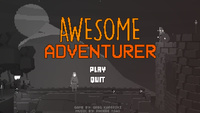
Very short, but amusing and with a nice payoff at the end.
- Creator(s): @GregKaperski
- Tech: Unity
- State: Complete
- Post-jam development: No
- GameJolt Page: Awesome Adventurer
Being Her Darkest Friend

Very nicely constructed, atmospheric and compelling.
- Creator(s): @chronerion, @humaldo, @leafthief, @Ultrasqull, @jokus14, @Boerkiii
- Tech: Unity
- State: Complete
- Post-jam development: Yes, unreleased
- AdventureJam Awards: 2015 Third Place
- GameJolt Page: Being Her Darkest Friend
- Game Website: Being Her Darkest Friend
Bellular Hexatosis

Eerie and evocative, abstract and whistful. One of few first person adventure games.
- Creator(s): @neotenomie, @slimedaughter
- Tech: Unity
- State: Complete
- Post-jam development: Yes, last update November 2015
- AdventureJam Awards: 2015 Judges' Pick - Jake Elliott
- GameJolt Page: Bellular Hexatosis
- Game Website: Bellular Hexatosis
Brilliance: An Interstellar Journey

A little hit and miss with regards to finding the right choices to progress, but an otherwise decent short sci-fi story.
- Creator(s): @BenBlankley
- Tech: Quest
- State: Complete
- Post-jam development: No
- GameJolt Page: Brilliance: An Interstellar Journey
Calling Hours
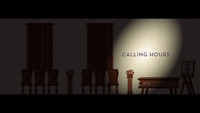
Nice concept, and interesting presentation.
- Creator(s): Fox Flower
- Tech: Construct 2
- State: Unfinished
- Post-jam development: No
- GameJolt Page: Calling Hours
The Cascade
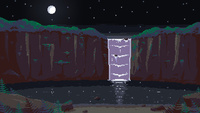
Doesn't offer much in the way of player choice, but a solidly presented story with some nice art and atmosphere regardless. At the time of writing, downloads are not currently available.
- Creator(s): @davegrey
- Tech: Ren'Py
- State: Complete
- Post-jam development: Yes, last update June 2015
- GameJolt Page: The Cascade
Grimstorm
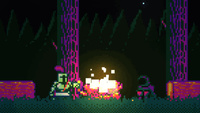
Difficult, but in-style with older metroidvania style games. Combat mechanics feel a little awkward, but presentation is great and there's a lot of content. Needed to set LD_LIBRARY_PATH to the current folder, and Alt+Enter doesn't work.
- Creator(s): @niksudan
- Tech: GameMaker: Studio
- State: Complete
- Post-jam development: Yes, unreleased
- GameJolt Page: Grimstorm
Kronan, the Librarian
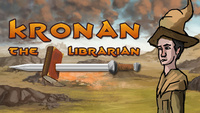
Nice writing, with some lovely background art. Animations are a little stiff, but not distractingly so. Has a "to be continued" ending.
- Creator(s): @talecrafter
- Tech: Unity
- State: Unfinished
- Post-jam development: No
- GameJolt Page: Kronan, the Librarian
LAST CASE – THE DISAPPEARANCE OF AMANDA KANE

Lovely visual style, with a great approach to text presentation. Nicely exectuted atmosphere supported by voice overs and music. Has an abrupt ending.
- Creator(s): @AffinityPlay, Guiselle Llanten O.
- Tech: Visionaire Studio
- State: Unfinished
- Post-jam development: No
- GameJolt Page: LAST CASE – THE DISAPPEARANCE OF AMANDA KANE
Lunar Holiday

Doesn't offer much in the way of player choice, but it's sets up an interesting sci-fi world. Has some grammatical errors, though the author states practicing written English as a personal goal for the project.
- Creator(s): @jarnik
- Tech: Twine
- State: Complete
- Post-jam development: No
- GameJolt Page: Lunar Holiday
Marco's Mansion
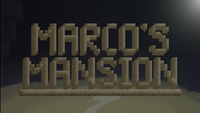
Atmospheric and interesting exploration concept. Linux build has input issues.
- Creator(s): Michael DiLucca, Alex Hollander, Boyd Fox, Dilan Alpay, Brendan Brown, Ian Hatman, Andrew J.G. Mylet, John Gall
- Tech: Unity
- State: Complete
- Post-jam development: Yes, last release Oct 2015
- GameJolt Page: Marco's Mansion
MARY WOKE UP TODAY

A compelling and atmospheric story with some nice use of painted backgrounds.
- Creator(s): @inyoursigh, Alexander Bohm, Elizabeth Baumgartner
- Tech: Unity
- State: Complete
- Post-jam development: No
- GameJolt Page: MARY WOKE UP TODAY
Nico

An interesting experiment in exposing multiple concurrent narratives, which ends up feeling a little directionless.
- Creator(s): Alessio Bottosso, @FilMagrini
- Tech: Unity
- State: Unfinished
- Post-jam development: No
- GameJolt Page: Nico
Once Upon A Timeline

A nice implementation of time travel mechanics, with an engaging plot and some fun puzzles.
- Creator(s): @awfindlay, @teamCHESH
- Tech: Unity
- State: Complete
- Post-jam development: No
- AdventureJam Awards: Second Place, Best Music, Best Gameplay, Best Puzzles, Most Charming
- GameJolt Page: Once Upon A Timeline
Oozie Plays With Himself

Takes a little while to get to the puzzles, but they're well constructed and enjoyable.
- Creator(s): @jacklehamster, @lawnreality
- Tech: Flash
- State: Unfinished
- Post-jam development: No
- GameJolt Page: Oozie Plays With Himself
Pain in Hell's Creek

A nice twist on horror tropes, with mostly light hearted framing. Interesting run mechanics. Contains gratuitous gore and mentions rape.
- Creator(s): @Pixelfangames
- Tech: GameMaker: Studio
- State: Complete
- Post-jam development: Yes, unreleased
- GameJolt Page: Pain in Hell's Creek
Ree's Ruined Earth Courier Service: Shipment Delayed
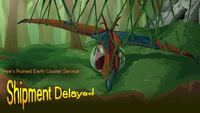
Short, but sweet, with some nice background and character art.
- Creator(s): @quinnstephens
- Tech: Unity
- State: Complete
- Post-jam development: No
- GameJolt Page: Ree's Ruined Earth Courirer Service: Shipment Delayed
Routine

An interesting exploration of monotony and hidden opportunities in daily life.
- Creator(s): @Johnnyaboh, @lucaderosso, @pinakes, @campoverdi
- Tech: gist-txt
- State: Complete
- Post-jam development: No
- GameJolt Page: Routine
Sidekick, Looking for Superhero

A charming and humorous look at relationships set in a world of superheroes and villians.
- Creator(s): Ming Iu
- Tech: GWT
- State: Complete
- Post-jam development: No
- GameJolt Page: Sidekick, Looking for Superhero
Slaughtertrain

A text adventure focused on resource management in a silly setting.
- Creator(s): Kent Sutherland, Rosstin Murphy, Laura Michet
- Tech: Twine
- State: Complete
- Post-jam development: No
- GameJolt Page: Slaughtertrain
Speak of the Cloud

Traditional style point and click adventure. Some UI clunkiness, but the developers are working to resolve this. Otherwise, an enjoyable game.
- Creator(s): @MechanicMoon
- Tech: GameMaker: Studio
- State: Unfinished
- Post-jam development: Yes, unreleased
- AdventureJam Awards: First Place, Best Sound Design, Best Story, Best Dialog, Best Characters, Most Funny, Most Thought Provoking
- GameJolt Page: Speak of the Cloud
SPOTNEY
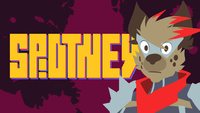
Nice artwork, multiple endings and good characterisation.
Sunspot

Nice pacing and sense of panic in a sci-fi setting. Health mehcanics aren't particularly present, but do give a sense of risk. May not be completeable.
That Odd World

Looks like it has the makings of a humorous adventure game, but certain inventory icons seem to be missing.
- Creator(s): @marcogiorgini
- Tech: asm.js via emscripten
- State: Unfinished
- Post-jam development: No
- GameJolt Page: That Odd World
The Ever-Changing Mansion
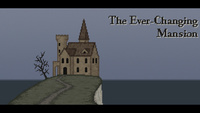
A nice maze exploration game framed as interconnected rooms and locked doors.
- Creator(s): @Arcnor
- Tech: libGDX
- State: Complete
- Post-jam development: No
- GameJolt Page: The Ever-Changing Mansion
The Homebound Predicament
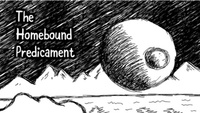
A short sci-fi story with a cute hand drawn style.
- Creator(s): @melkybee
- Tech: Phaser
- State: Complete
- Post-jam development: No
- GameJolt Page: The Homebound Predicament
The Endless Night - Prelude
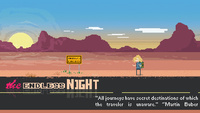
Unfotunately doesn't show text on Linux. This is an upstream engine bug that has been resolved and should be fixed in future builds of this game.
- Creator(s): @FuturistTeletex
- Tech: Visionaire Studio
- State: Unfinished
- Post-jam development: Yes, last update March 2016
- GameJolt Page: The Endless Night - Prelude
- Game Website: The Endless Night - Prelude
The Last Space Marine

- Creator(s): @LastSpaceMarine
- Tech: Quest
- State: Complete
- Post-jam development: No
- GameJolt Page: The Last Space Marine
The Night Henry Allen Died
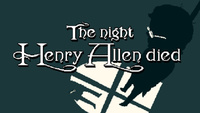
Charming isometric pixel art.
- Creator(s): @Ludipe, @Oluwagembi, @celer_gut
- Tech: Construct 2
- State: Complete
- Post-jam development: No
- GameJolt Page: The Night Henry Allen Died
The Tower

A cute vector style with some learning oriented gameplay and a nice take on the Tower of Babel mythology.
- Creator(s): Stav Goldstein
- Tech: Flash
- State: Unfinished
- Post-jam development: Yes, last release June 2015
- GameJolt Page: The Tower
Theropods
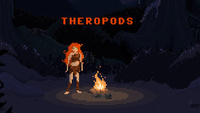
Outstanding animation, great palettes. Solidly paced and well directed in spite of being short.
- Creator(s): @SeethingSwarm, @Tinystuffz, @Yerwolves, @Zstriefel
- Tech: Flash
- State: Complete
- Post-jam development: Yes, unreleased
- GameJolt Page: Theropods
Time To Spare

A rough concept with time travel mechanics that could make for an interesting game if developed further.
- Creator(s): @iCloseau, @Numa1988, @Sithdown
- Tech: Unity
- State: Unfinished
- Post-jam development: No
- GameJolt Page: Time To Spare
Troll Bridge
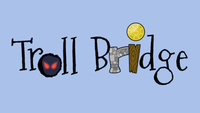
Well written, humorous and fun.
- Creator(s): @OrnithopterGame
- Tech: Java
- State: Complete
- Post-jam development: No
- GameJolt Page: Troll Bridge
Turing Adventure

Requires you to interact with two chat bots to solve the game's puzzle. A unique approach to dynamic player interaction.
- Creator(s): @cortastudios
- Tech: Unity
- State: Complete
- Post-jam development: Yes, unreleased
- AdventureJam Awards: 2015 Colossal Leap Award
- GameJolt Page: Turing Adventure
- Game Website: Turing Adventure
Twilight's End: Shadows Over Saint City

A broad feeling dystopian survival adventure with some good humour and options for non-linear progression.
- Creator(s): @Intendant_S
- Tech: Quest
- State: Complete
- Post-jam development: No
- GameJolt Page: Twilight's End: Shadows Over Saint City
VUELVE pronto
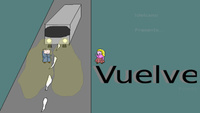
Collect souls to defeat your enemies in the spirit realm.
- Creator(s): @idelcano_com
- Tech: Java
- State: Unfinished
- Post-jam development: No
- GameJolt Page: VUELVE pronto
Walkman

Great animation, some solid puzzles and a good start for something bigger. What's there is enjoyable.
- Creator(s): @juhapennanen
- Tech: Unity
- State: Unfinished
- Post-jam development: No
- GameJolt Page: Walkman
WrestleQuest
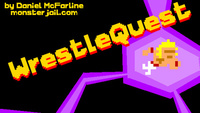
An awesomely silly game with simple, but rewarding puzzles.
- Creator(s): @the_dudefather
- Tech: GameMaker: Studio
- State: Complete
- Post-jam development: No
- GameJolt Page: WrestleQuest
As a side note, I also invited Jordi and Jake to share any advice they might have on supporting multiple platforms. The common problem they highlight is a hurdle that many developers face, but not[5] one that has an obscure or difficult solution (see footnote 5 for advice and resources).
Jordi: I'm really bad with this stuff. I was saved by Game Maker that can export to Linux, but I don't really know shit about it :P The only thing I know is about the mails I got complaining about how the game saved on a folder on Linux I wasn't aware about, and it was like saving the game on the users desktop or something... but it was how Game Maker per default saved the games on Ubuntu... Yes, this answer is very embarrasing, but I don't really have any advice on this topic, in any case, in much need of advice myself :P
Jake: I've only worked on a Linux-compatible game in Unity & that engine makes it pretty easy at this point. But one thing I would recommend is getting a sense of standard application behaviors on Linux, because they are different from other operating systems. For example, our game "Kentucky Route Zero" stores save & settings files in the player's "Documents" folder, which is common on Mac/Windows, but that folder doesn't even exist by default on many Linux distributions, and we hear a lot about it! (we're fixing it)
So that's a specific example, but to generalize: I recommend getting a sense of not only the technical issues on each platform, but what we might call the "cultural" issues on each platform :]
↑return to top↑Continued Development
Though game jams are often viewed as a consequence-free space to experiment and explore concepts without having them spill over into 'real life', it's not uncommon for the ideas forged within these crucibles to grow into larger scale projects. Of AdventureJam's 86 submissons, 17 show post-jam indications of intent for further development.
- Above The Waves (in-development expanded version)
- Being Her Darkest Friend (in-alpha sequel episode)
- Bellular Hexatosis (expanded and re-released on itch.io)
- Dear Anne.. (new trailer and indications of early builds)
- Foundations (in-development prequel)
- Grimstorm (in-development spin-off game)
- Late Last Nite (in-development "talkie" re-release)
- Long Live the Cat King (released updated version)
- Marco's Mansion (released updated version)
- Pain in Hell's Creek (in-development remake)
- Speak of the Cloud (in-development expanded version)
- Synergistic Endeavoring (in-development expanded version)
- The Endless Night - Prelude (re-released on itch.io, in-development expanded version)
- The Tower (released updated version)
- Theropods (in-development expanded version)
- Turing Adventure (released updated version)
- What's In the Safe? (released "talkie" version)
Whether these projects will achieve their goals is unknown, as is how many other titles may show signs of activity in the future. Regardless, the presence of enthusiasm for continued development speaks to the empowerment that developers have received from participating.
↑return to top↑Closing Thoughts
The true legacy of AdventureJam is in the developers of these games proving to themselves that they can create something interesting and drive themselves to pursue game development opportunities. Whether those people are experienced developers or newcomers, the motivation and inspiration that can be gained from completing small-scope projects breathes fresh air and new life into our personal lives and the industry as a whole - something that studios like Bethesda, Ubisoft Montréal, Double Fine, Media Molecule, Harmonix and many others have come to recognise.
Game jams have also helped incubate new developers and teams like Vlambeer, the SUPERHOT team, Space Budgie, Manekoware or South East Games, providing some amount of structure, direction and exposure where those might otherwise have been more scarce.
Will the first AdventureJam's participants go on to create great and culturally recognised works? I don't know, but I would be immensely surprised if any one of them could truthfully say that they did not find any sense of enrichment from taking part.
For myself, I'm very glad to have participated, to have had an opportunity to shape and grow my own skills. I have found it rewarding and insightful to play through and experience so many interpretations and expressions of what an adventure game can be. I find it difficult to nail down a short list of favourites, but I think the following titles stand out to me as things I would love to see more of:
- Aurion and the Aurochs
- LAST CASE – THE DISAPPEARANCE OF AMANDA KANE
- The Tower
- Theropods
- Turing Adventure
- Walkman
I am very much looking forward to discovering what myself and the other future participants create for AdventureJam 2016.
↑return to top↑
A note from Cheese
Thanks for reading!
Big thanks to Cassie, Stacy, Jake and Jordi for their contributions to this article, to AdventureJam and to the culture and appreciation of adventure games!
More information on AdventureJam 2015 can be found on the relevant GameJolt Jam page here. A stack of WIP tweets and musings can be found under the #AdventureJam hashtag on Twitter.
Details on AdventureJam 2016 can be found at adventurejam.org and on the @AdventureJam Twitter feed, and the proposed Twitter hashtag for the event is #AdvJam2016
I also created a guide to getting the most out of participating in AdventureJam here and a Twitter List of developers whose games were playable on Linux, which can be found here
[1] This Fred Brooks quote appears in The Mythical Man Month. The quote itself speaks to the notion that the value in initial exploratory work is not in having a practical foundation to build on top of, but in the insight gained which will inevatibly make the tangible outcomes of that initial work redundant.
[2] The Cascade was originally included in the AdventureJam games list, and I believe it was present during the voting period. However, at the time of writing, the game has no downloadable builds and no longer appears in the AdventureJam game list for reasons I am not aware of. It is not included in the charts and figures in the Game Submissions section, but it is mentioned in the cross-platform games as it was amongst the titles I'd played when originally researching and the developer had provided Linux builds.
[3] Above The Waves was the AdventureJam 2015 submission I worked on with my partner Mim. It's placed first in this list by virtue of lexicographical ordering. I hope to be in a position to reveal more about its future soon!
[4] Following AdventureJam 2015, I created a small point and click adventure named Robin's Rescue as an example SLUDGE engine project and released it with sources alongside an article on my experiences with using the engine.
[5] The XDG Base Directory specification covers the "best practices" for user specific data storage, encouraging developers to make use of $XDG_DATA_HOME and $XDG_CONFIG_HOME environment variables to get "safe" paths under which to create game specific subfolders to store save data and configuration files. In situations where these environment variables are not set, the application should fall back to the "default" paths defined in the spec. For Unity engine users, Application.persistentDataPath is provided as a convenience method for getting a user specific config path that respects $XDG_CONFIG_HOME. Tell your friends!
A final additional thanks to all AdventureJam 2015 participants who chose to provide cross-platform support for their games. It can often feel like an extraneous overhead, but it's very appreciated!
If you've got any thoughts on this article, you can email me at cheese@cheesetalks.net.
This article was published on the 31st of March 2016.